Tuesday Triage #97
- TUESDAY TRIAGE #97 by Vadim Drobinin
- On imitation and innovation
- Things I enjoyed reading
- 1. Teach Your Kids Bridge by Nima Badizadegan
- 2. What I learned gathering thousands of nootropic ratings by @TroofChatty
- 3. When Everything is Important But Nothing is Getting Done by Roman Kudryashov
- 4. Quick fixes to your code review workflow by @DRMacIver
- 5. What we lose when we don't speak the same language as our immigrant parents by Sarah Frances Phillips
- 6. Learning Chess at 40 by Tom Vanderbilt
- 7. Why won’t some people pay for news? by Mark Coddington and Seth Lewis
- 8. Hacking the Bureaucracy to Get Stuff Done by @zainrzv
- 9. The wonder material graphene may have found its killer app by The Economist
- 10. Empirical Notes on Kissing by belkarx
- Things I didn't know last Tuesday
- 1. Game Boy Sewing Machine
- 2. Why Northern Ireland has no flag
- 3. Bee Skep
- 4. Tiny trackers in Parmigiano Reggiano rinds
- 5. Corsi–Rosenthal Box
- 6. Frisson
- 7. Chuan Chuan
- 8. Blueberries we know were domesticated (relatively) recently
- 9. Sargasso Sea
- 10. Why people initially hated shopping carts
- Book of the week
- Thank you and see you in a week!
TUESDAY TRIAGE #97
by Vadim Drobinin ¶
Your weekly crème de la crème of the Internet is here!
24.05.2022 (read in browser)
-
Intro
Whatever is on my mind this week. -
Things I enjoyed reading
Ten-ish articles I found worth reading. -
Things I didn't know last Tuesday
Ten-ish facts I didn't know when I wrote the previous edition. -
Book of the week
Some thoughts on the latest book I've read.
On imitation and innovation ¶
I've already shared one of the principles I swear by, "imitate, then innovate".
The main "imitation" highlight this week was replicating a dessert by Cedric Grolet. He is famous among pastry chefs for many things, but the most beautiful is the series of so-called "fruits".
In this particular case I was making an orange, which starts with simmering orange peels and pith for a week, and then freezing it into spheres with some orange and lime gel. The spheres are dipped into whipped white chocolate ganache and are frozen again:
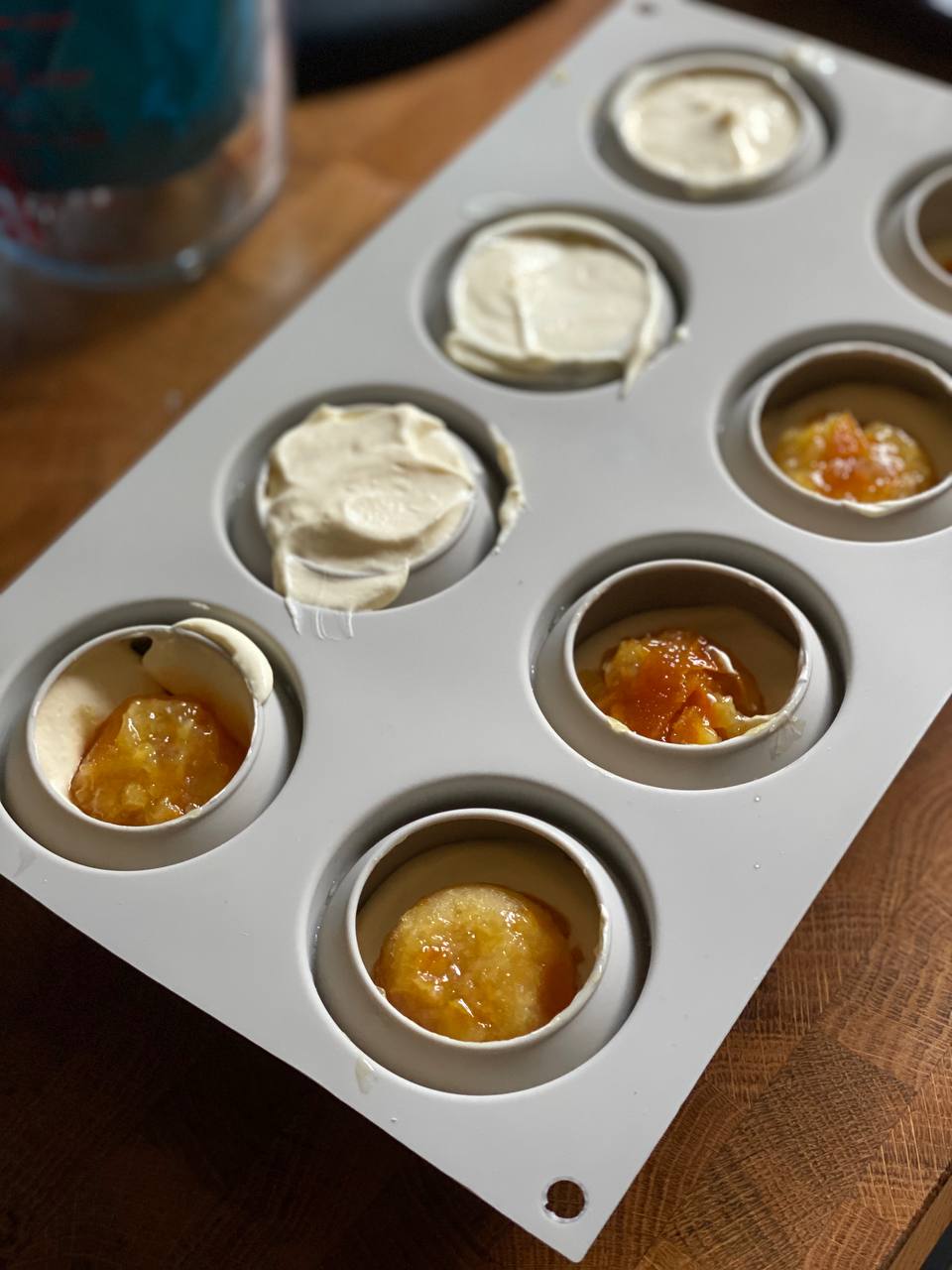
Next, I dipped them into an orange glaze:
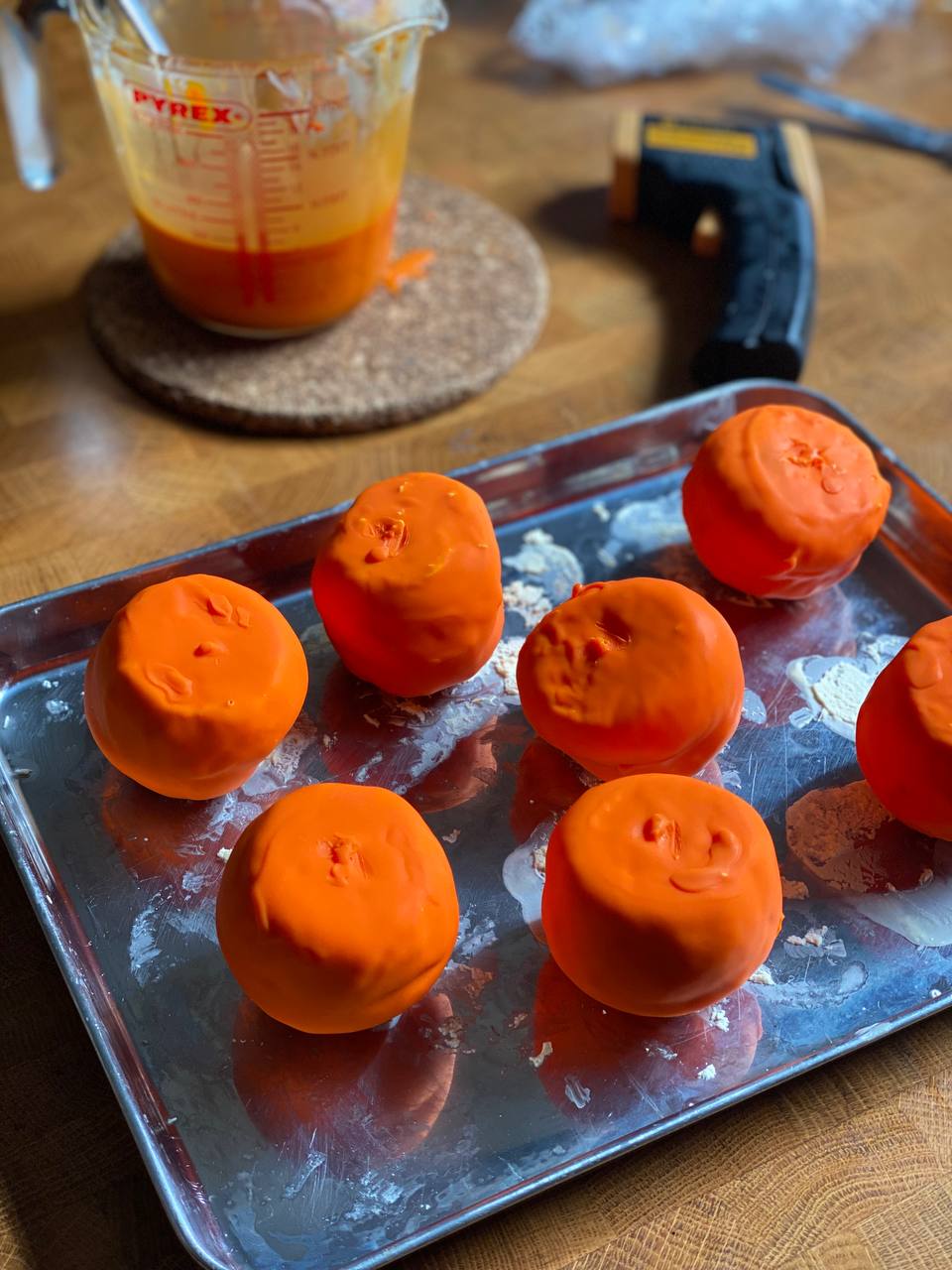
And covered with the same glaze from a spray gun to imitate a peel texture:
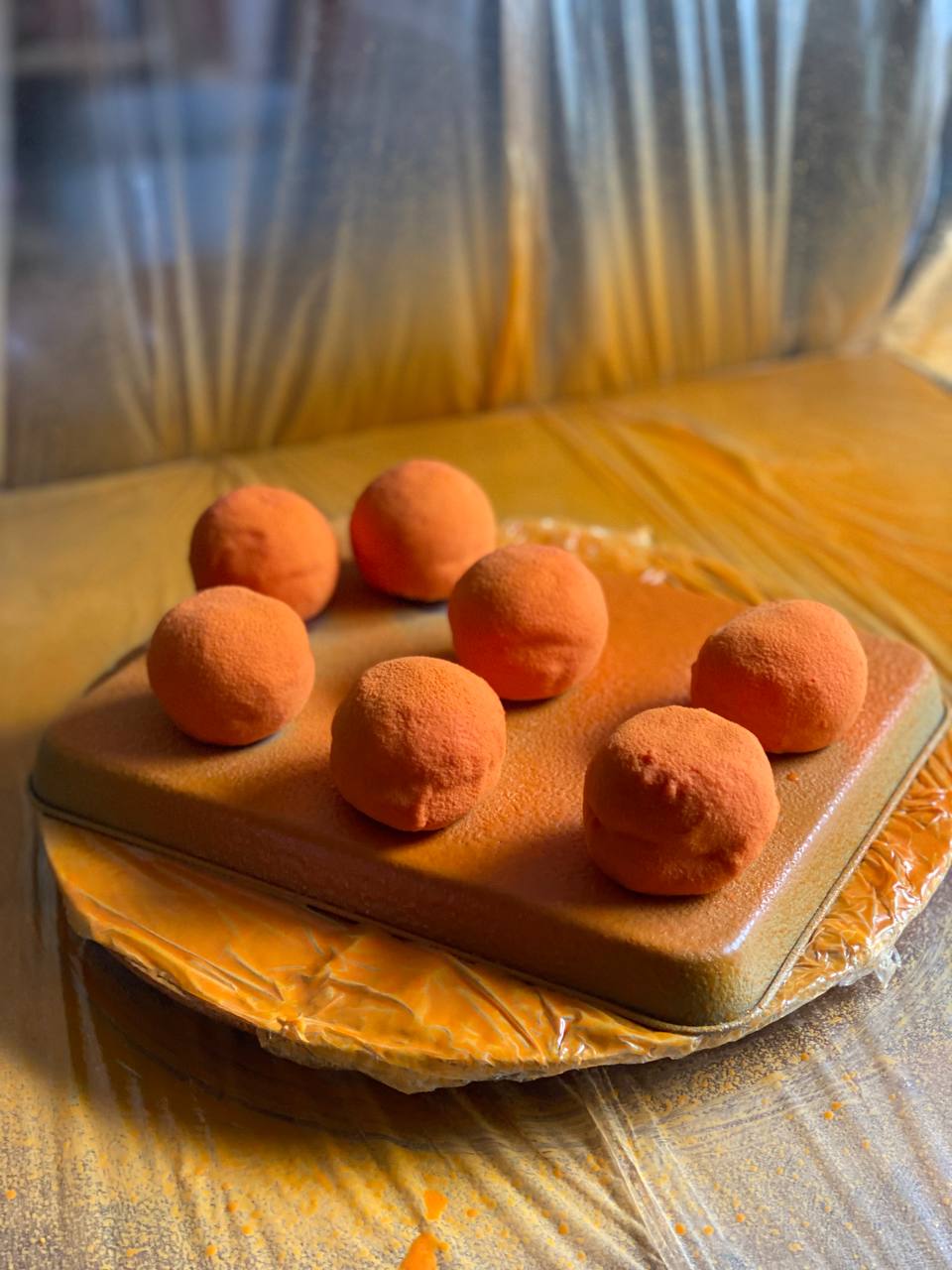
I've also added some real stems on top of those. Can you guess how many real oranges are in the bowl?

The dessert is actually surprisingly light and simple (way easier than the Grolet's flower I've made before).
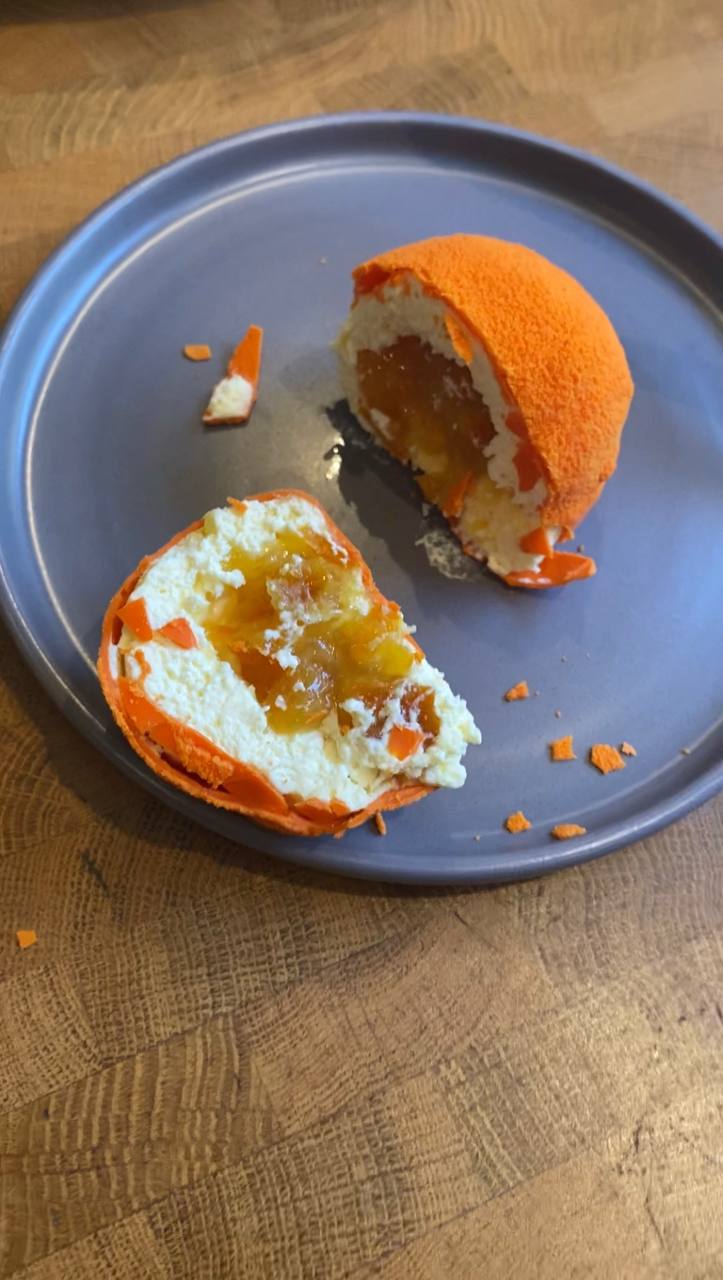
But there was some room for the innovation too. I got inspired by edible stones from Mugaritz, so made them myself (that's just potatoes, clay and lactoze):
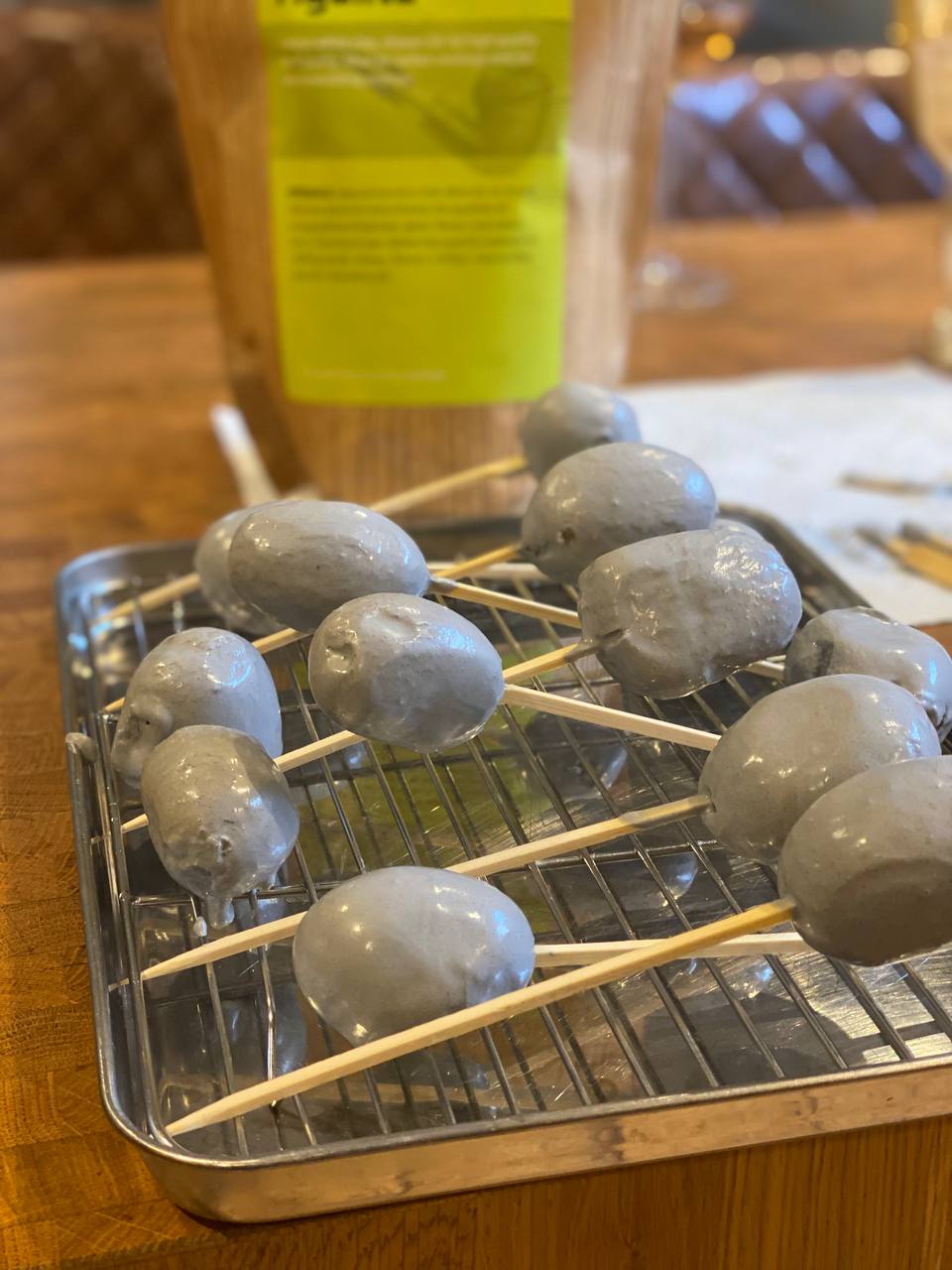
Our shy attempts at foraging resulted in some wild garlic butter, and some truffle leftovers a few weeks ago turned into a truffle butter as well:
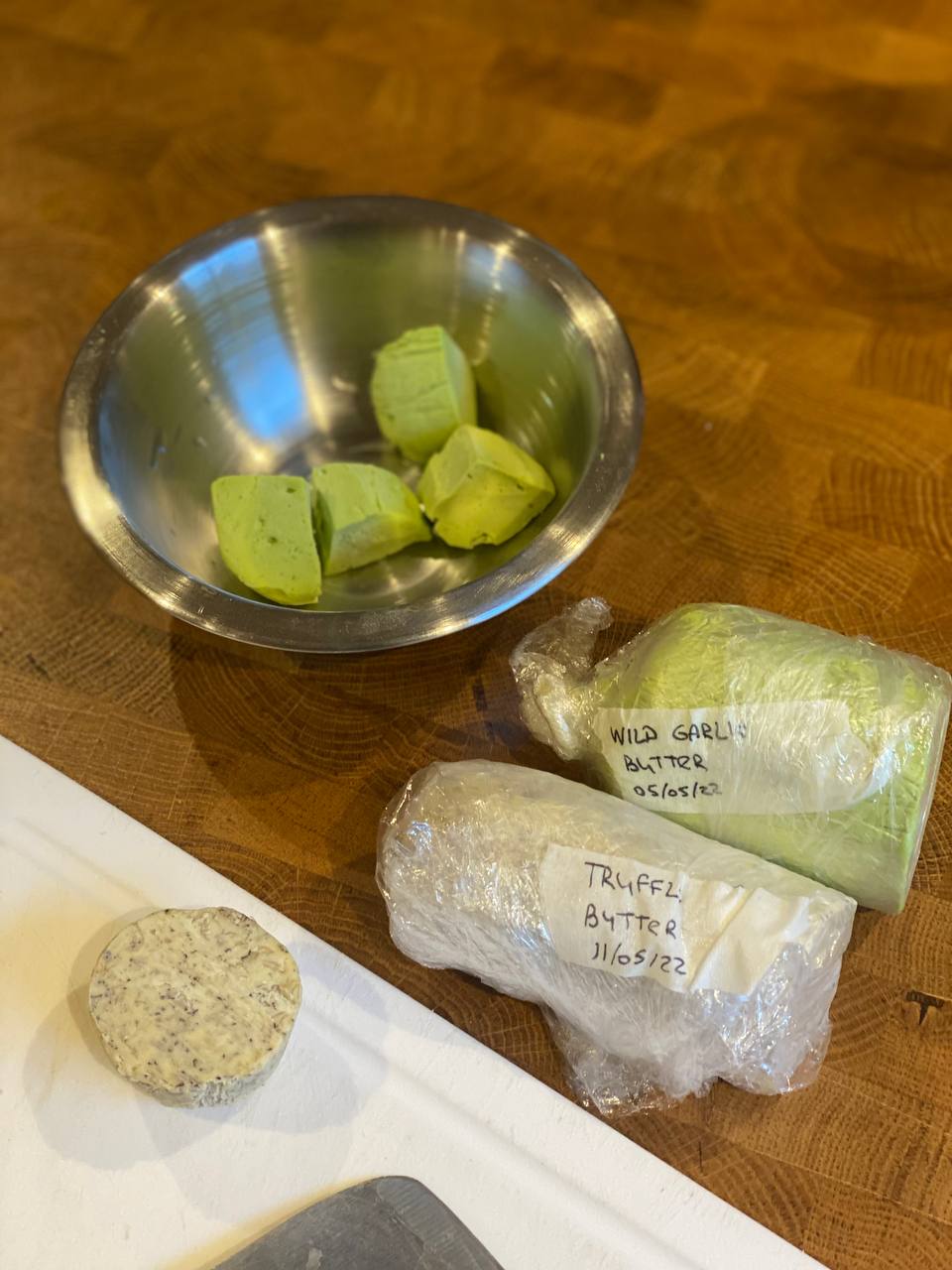
I fried some fresh scallops with the truffle butter and morels, topped them up with a wild garlic beurre monté, and then plated on top of the potato "stones".

Simple and beautiful.
Things I enjoyed reading ¶
1. Teach Your Kids Bridge by Nima Badizadegan ¶
Probably one of my favourite genres is a hottake on someone else's hottake. A few days ago there was this article prompting to teach kids to play poker, not chess, as it probably better prepares for the real world. This is a reply to the author:
Bridge games are set up so that the aspect of “who has the good cards” is completely mitigated. Bridge is often played “duplicated”: many tables play with the same sets of hands, and your result is compared against other pairs (at other tables) with the same hands, not the other pair at the same table. In this way, playing weak hands well is rewarded, while playing strong hands poorly is punished. The randomness of “who gets the cards” is mitigated in the scoring.
Occasionally I wish I learnt bridge as I keep hearing how nice it is. I hardly enjoy card games though, and probably would prefer Go or chess over any of them.
2. What I learned gathering thousands of nootropic ratings by @TroofChatty ¶
Anyone who's watched the movie (or series) Limitless probably wished that there was a pill able to increase one's memory and cognitive abilities tremendously but without side effects. Some of those people went further and started to research nootropics. Not all of them are available over the counter though, so usually it's trial and error, but at least some people try to collect the outcomes in a single place:
What are the first things that come to mind when you think of nootropics? Piracetam? Ashwagandha? Ginseng? Theanine? Most of these common nootropics actually got relatively poor ratings. This is compared to potent prescription-only medications like Adderall, but also to sport (see above) and to a lot of lesser-known nootropics.
As someone who lifts weights occasionally, I am quite surprised to see that it's not just included in the list on par with LSD, but also is ranked as "life-changing".
3. When Everything is Important But Nothing is Getting Done by Roman Kudryashov ¶
Getting things done is one of those Holy Grails among modern generations, and it's even harder when you're doing things as a part of a team or an organisation. This is a good selection of suggestions on possible ways to make it at least less painful:
For the scoping constraint, we began a slow process of breaking larger projects apart into smaller pieces. We didn’t move overnight from projects that took six months into two-week sprints. We weren’t ready for that. But those six-month projects were broken up into features that could take two months each, and that began to flex our collective practice of how to find smaller deliverable pieces within larger projects.
Splitting big problems into smaller ones until there is a clear deadline and easy deliverables is probably one of those skills I use not only at work but in the day-to-day life, from cooking to traveling, so definitely can vouch for that.
4. Quick fixes to your code review workflow by @DRMacIver ¶
Another problem with delivering features among engineers is the review cycle. There are different types of reviews out there, from code reviews, to QA reviews, to App Store reviews and so on, but in most cases unless the code is reviewed and approved, it's not going anywhere, and many engineers overlook how much it could affect their time estimations.
The solution is to be very clear about the difference and preface all of your comments with “This is not a request for changes, but FYI…” or words to that effect. People will sometimes change the thing anyway if they go “Oh yeah that is a better idea”, people will also sometimes respond explaining why they didn’t do it that way and that’s usually actively good, but most of the time they should just feel free to mark the comment as resolved without further discussion or action.
My favourite strategy for the last few years is to look at the code and think if it makes the codebase (or user experience) better if merged. If the answer is yes, I approve it straightaway, and then spend some time adding suggestions and questions to understand some of the decisions better. If the answer is not as clear, I start asking questions, but actually blocking the release and requesting changes is very rare and should happen way earlier, during some drafting sessions.
5. What we lose when we don't speak the same language as our immigrant parents by Sarah Frances Phillips ¶
There is probably some limit to the number of languages a kid could learn and operate comfortably without potential mental issues, and while some languages might be more useful in the future than other, parents' native languages are probably the easiest to pick up, because of the exposure to their friends, grandparents, and so on.
I don’t know what I would have become had I not been forced to integrate, and I am thankful for my mom’s inner tiger. When I asked her about her decision, she said, “I learned English because I live in America. But Korea is my country. I want my children to learn Korean so they can speak with 할머니 (grandma) and explore my country too.”
At the same time, these days accessing translated culture is simpler than ever, so maybe there is not much point in exploring a country through its native tongue.
6. Learning Chess at 40 by Tom Vanderbilt ¶
As we've already established that kids need to learn bridge, here is what should the rest of us do in the meantime: learn chess, as apparently years of life experience are not a joke.
For all my daughter’s seemingly spritely processing power, I had higher-order capacities I could draw upon. “If you’re younger, you can process information super-fast,” she told me, “but you may not know what to do with that information as you process it.” She cautioned she was “oversimplifying” things, but I was happy to take it.
I don't have much to add to it, although for me the biggest boost in learning skills was when I realised how to use Google properly.
7. Why won’t some people pay for news? by Mark Coddington and Seth Lewis ¶
These days lots of content is paid, and that makes total sense. At the same time, so many news portals attempt to lure users into the paywalled gardens, and that faces an expected resistance:
Ultimately, study participants also described future scenarios in which they might be more willing to pay: if a news subscription were cheaper, offered a one-stop source for reliable coverage, brought added value through higher-quality news, and, again, served as a “commitment device” to help them build the habit of reading the news.
I can't really complain about paid news, but I do feel like it'd be easier for me to learn about things elsewhere just to make sure I don't trust a single source more just because I paid for it.
8. Hacking the Bureaucracy to Get Stuff Done by @zainrzv ¶
The title might get some people too excited but in fact it's about understanding how does the bureaucracy work. I definitely got better at it over years, but still struggle sometimes when faced with unexpected paperwork or rules that don't make any sense in 2022.
For example, I used to struggle with people not responding to my emails when I tried to get their approval on a change I was making. “People are busy,” my manager explained. “Instead say, ‘I’ll be making this change on Thursday unless you object before then.’”
This is a great advice though.
9. The wonder material graphene may have found its killer app by The Economist ¶
I remember reading about graphene when it was just isolated, but never understood its application in layman's terms.
The addition of a small amount of graphene to concrete provides an anchor for the cement in it to grab onto, resulting in a more powerful interaction as the concrete cures. This means not only that less concrete is needed to achieve the same level of strength, but also that structures made of it are likely to last longer.
This is a good selection of use cases for people who skipped both chemistry and physics for years (like I did).
10. Empirical Notes on Kissing by belkarx ¶
I guess there are multiple ways to prepare for your first kiss, but researching all possible papers on the subject is definitely one of them:
That chemical cocktail provides both short- and long-term benefits, from temporary euphoria (although you do gain tolerance to dopamine over time) and stress relief (drops in cortisol and therefore stress decrease) to a closer, more satisfying relationship. Kissing can also apparently provide significant relief from hives and other mild allergic reactions. Are those benefits worth your mouth’s microbiota growing to slightly resemble that of your partner?
In the meantime I think I know how to start saving money on Claritin.
Things I didn't know last Tuesday ¶
1. Game Boy Sewing Machine ¶
How to promote sewing to teenagers in early 00's? Singer though that connecting a machine to a Game Boy might help:
A special operation software titled Raku X Raku Mishin (“Easy Easy Sewing Machine,” developed by Natsume) allowed users to control the machine with the Game Boy and customize stitch styles as well as a variety of patterns like shapes and letters. Coming in six colors, the machine’s clear plastic shell echoed the aesthetic popularized by Apple and partially adopted by Nintendo at the time.

Looks pretty stylish too.
2. Why Northern Ireland has no flag ¶
Some people might question if NI is actually a country to have a dedicated flag, but England, Scotland and Wales do have their own official flags, and Northern Ireland doesn't.
There is an unofficial one though:
The Ulster Banner was designed around 1923. It first flew above the Parliament of Northern Ireland in an official capacity in 1953, though it had a lesser status than the Union Jack. The Ulster Banner continued to enjoy its status as the semi-official lesser flag of Northern Ireland until 1973, when Parliament was abolished because of the Troubles. Hence, the government which was represented by the Ulster Banner doesn’t actually exist anymore.
Although seems like even the government uses it more or less everywhere.
3. Bee Skep ¶
Up until I've seen my first bee hive, I thought they look like in cartoons. The latter actually comes from the ancient hand-made hives:
Skeps are made from long pieces of straw that are twisted together to form a thick rope. The rope is then coiled together to form the traditional skep shape.
A hollow cavity inside provides room for the bee family to build comb. A skep hive has no floor. It sits upon a wooden platform or a rush matt.

Not hard to make too.
4. Tiny trackers in Parmigiano Reggiano rinds ¶
I didn't know that's such a big issue in the industry:
For the past two decades, Parmigiano Reggiano wheels have already featured a unique alphanumeric tracking code, but now, the Consortium has tested embedding p-Chip micro transponders into the casein label. As the Consortium explains, "The innovation combines food-safe Casein labels with the p-Chip micro transponder — a blockchain crypto-anchor that creates a digital 'twin' for physical items. This scannable new food tag is smaller than a grain of salt and highly durable, delivering next-generation visibility and traceability."
Next time I probably wouldn't boil the cheese rinds for a sauce though.
5. Corsi–Rosenthal Box ¶
Last summer I was trying to look up an air purifier but quickly gave up as it looked like there is too much to learn or to pay to choose the right one. Seems like there might be a better option.
The Corsi–Rosenthal Box, also called a Corsi–Rosenthal Cube or a Comparetto Cube, is a design for a do-it-yourself air purifier that can be built comparatively inexpensively.
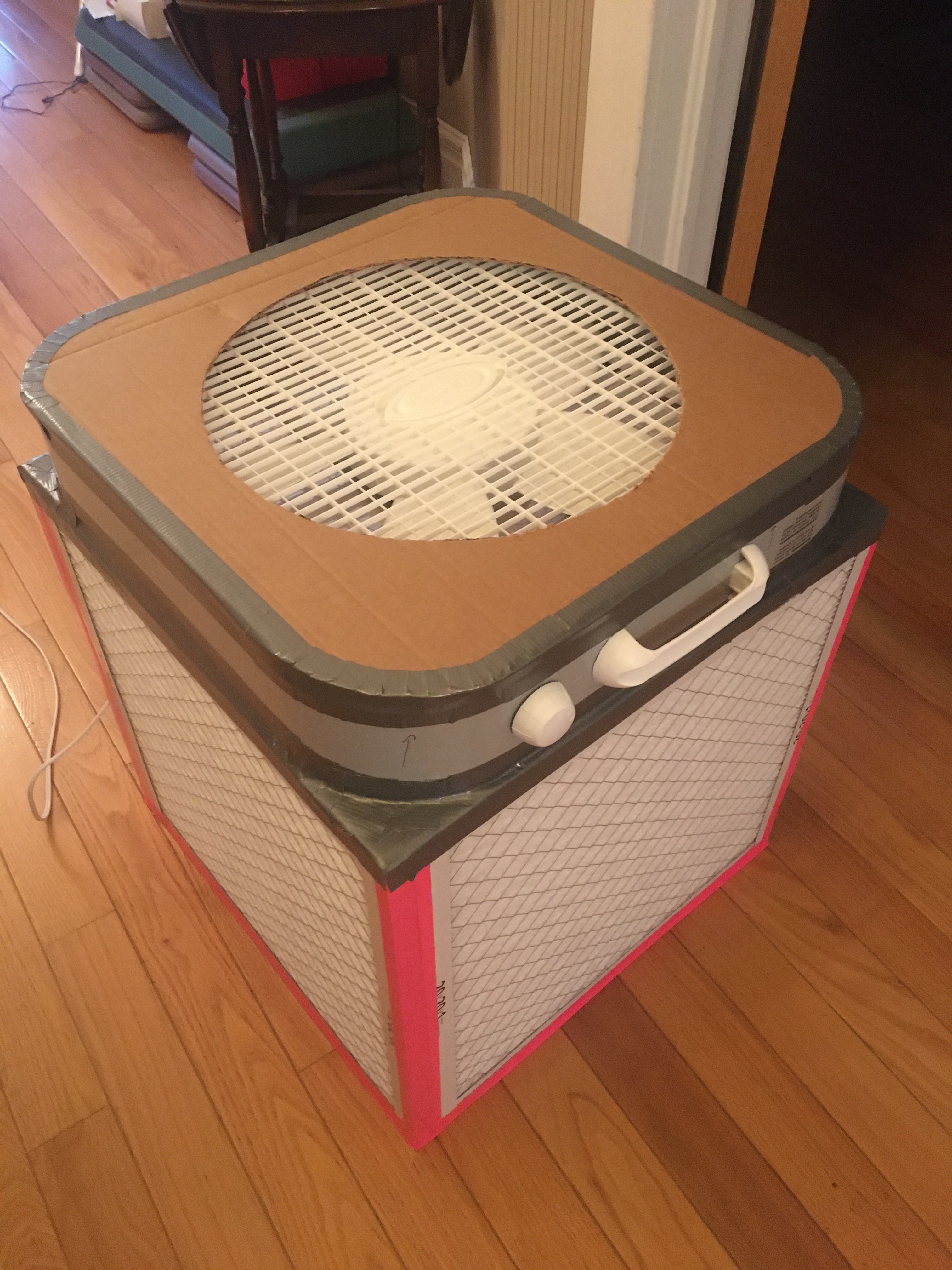
Next time I should just look up a 3D printer guide for it.
6. Frisson ¶
There is a dedicated word for the feeling from the right music:
There is a word that describes this common human response to music — a word for “that moment” when a song pierces your body and soul. It’s called “frisson,” and it’s the reason why music from artists as seemingly disparate as Johnny Cash, Metallica, Céline Dion, and Mozart are all featured on a recently released, scientifically-backed playlist of songs that researchers claim are likely to give people “chills.”
And scientists think this is caused by us not expecting something in the song, like an unusual tune.
7. Chuan Chuan ¶
There is an interesting concept in Chinese dining where visitors pick up skewers with food, and pay for the number of used skewers after dinner:
The origin of the name “Chuan Chuan Xiang” is because this is a kind of snack that is served on a bamboo skewer and put it in a hot pot.

I've read about a few more places doing the same for drinks (pay for empty bottles or caps), but that probably wouldn't work in a country where everyone buys drink by a glass.
8. Blueberries we know were domesticated (relatively) recently ¶
I am not a huge fan of blueberries but the berries as we know them are only a century old:
Eventually, in 1916, Coville and White sent their first containers of domesticated blueberries to market, but they continued working together for almost 20 years. In the July 4, 1919, issue of Science, for example, White posted an advertisement “offering $50 apiece for wild blueberry bushes bearing berries as large as a cent.”
And seems like two folks randomly spent half of their lives trying to come up with a bigger and better versions.
9. Sargasso Sea ¶
While talking about eels, I've learnt that they mostly breed in waters of this sea, which is not an actual sea:
The Sargasso Sea is a region of the Atlantic Ocean bounded by four currents forming an ocean gyre. Unlike all other regions called seas, it has no land boundaries.
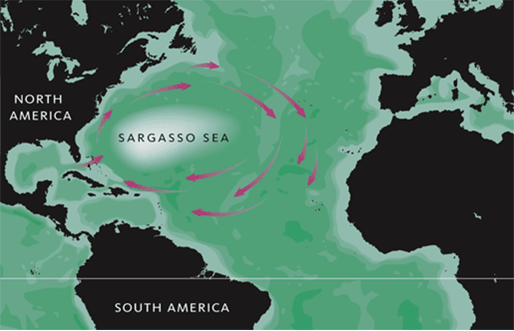
Really confusing, but seems like scientists call it a "sea" purely because within its imaginable boundaries the species differ from the outsides.
10. Why people initially hated shopping carts ¶
Who'd have thought that an invention aimed at making lifes better will not be accepted by people?
Women would say, 'No, we have pushed enough baby buggies around -- we are not going to push carts in stores,'" Goldman recalled in a 1972 letter. Men thought the carts would make them look weak.
To be fair, I skip the shopping cart most of the time too (and then regret it almost immediately).
Book of the week ¶
I didn't know much about Richard H. Turner up until this week, but couldn't pass by a book dedicated purely to pork recipes.
Apparently he was trained by the Roux brothers, and then played an important part of plenty London restaurants, from Hawksmoor to Foxlow. I haven't seen his other books yet, but this one covers pretty much all aspects of dealing with these beautiful animals, from breeding to roasting whole, as well as comes up with a bunch of recipes I didn't think of before, like bacon & bourbon mince pies.
It's also simply called Hog:
There is no way a year-old pig can be produced for the cost of a three-month-old pig, and there is no way a three-month-old pig can taste like, or have the nutritional value of, a year-old pig.
Ultimately the secret to top-quality, tasty pork, the likes of which will have your family in rapturous silence at the table, is simple: happy pigs make tasty pigs. If they are given enough room to range freely and plenty of balanced food supplemented with fresh vegetables and forage (see Feeding), are kept clean and in groups, and are treated with respect, pigs will grow as nature intended – more slowly than an intensively farmed pig, but all the better for it.
I couldn't resist the urge to try out a few recipes from the book:
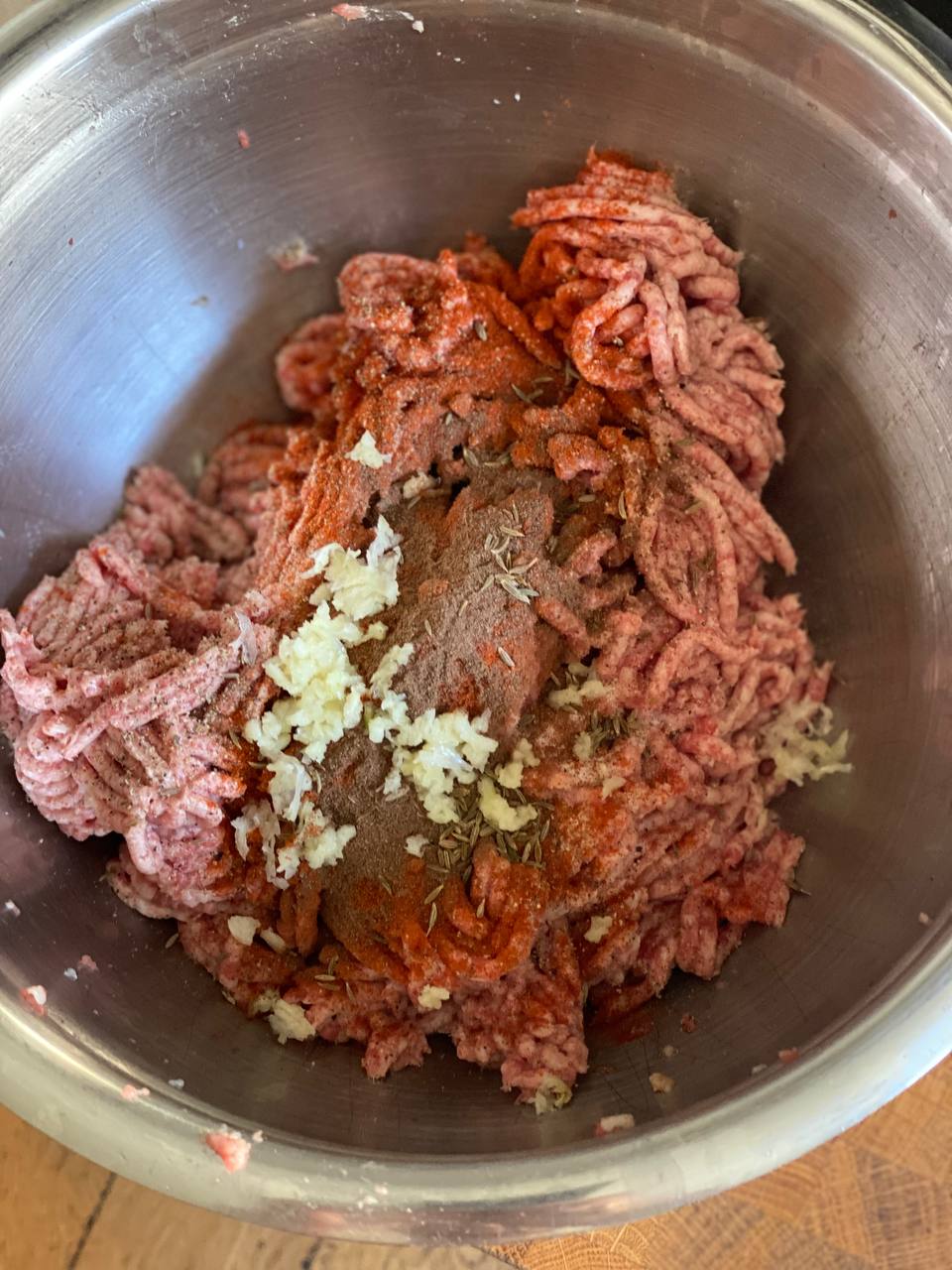
So as I write there is a pork rillettes chilling down in the fridge, some classic pork sausagemeat vacuum-packed and frozen, and these two sausages waiting for its hour (a North African Merguez and a cooking Chorizo):
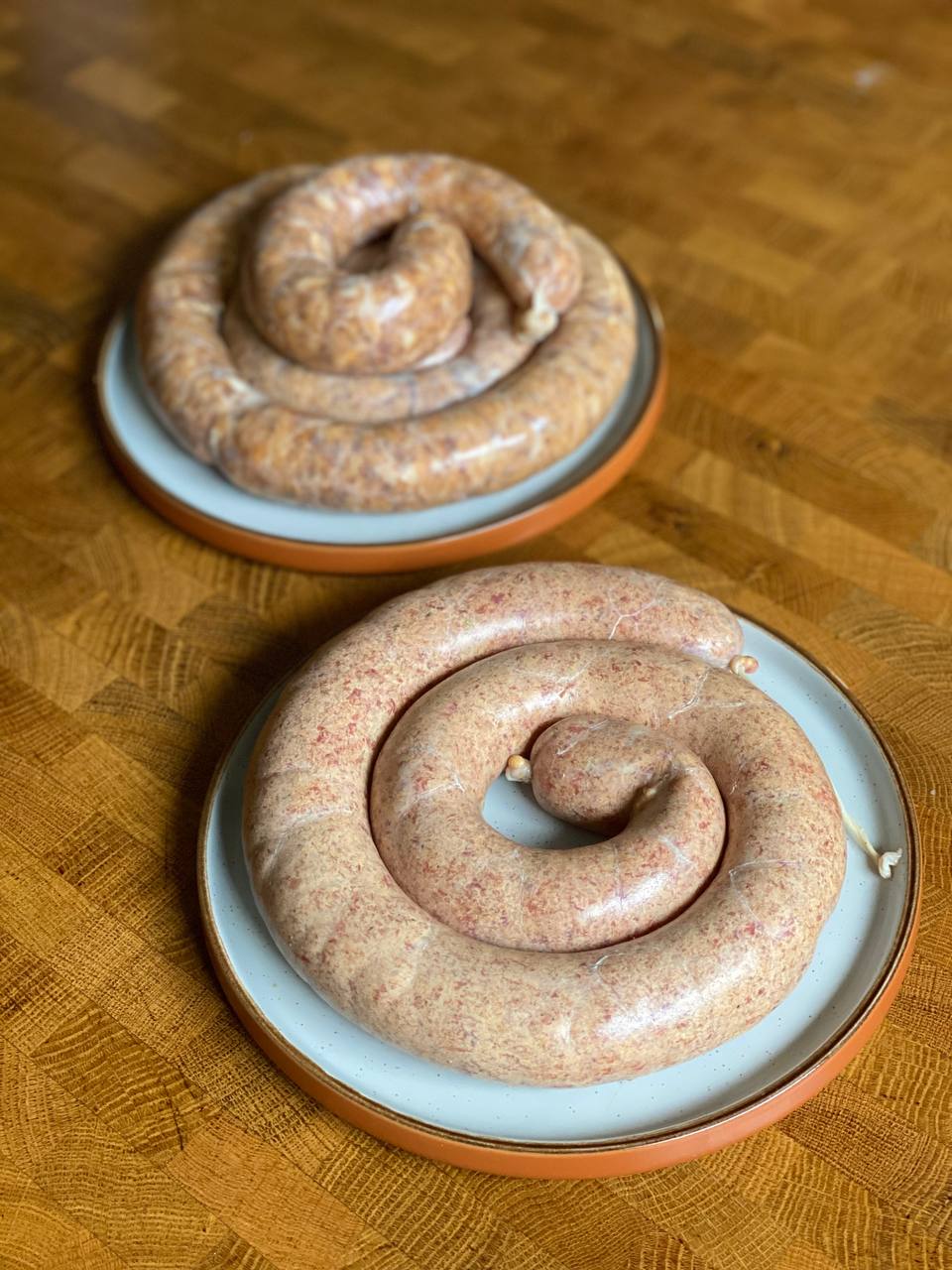
I will probably smoke them at some point and serve grilled to share (although we did have a small piece of each to compare already).
Thank you and see you in a week! ¶
If you have any questions, or want to suggest a link for the next newsletter, please drop me a message on Twitter or reply to this email.
Cheers! 🍸